Subscribe to our Telegram channel to receive latest news
Tea Appreciation Class with Tea Chapter – A Tea House visited by QueenElizabeth II
Maureen
August 30, 2012
August 30, 2012
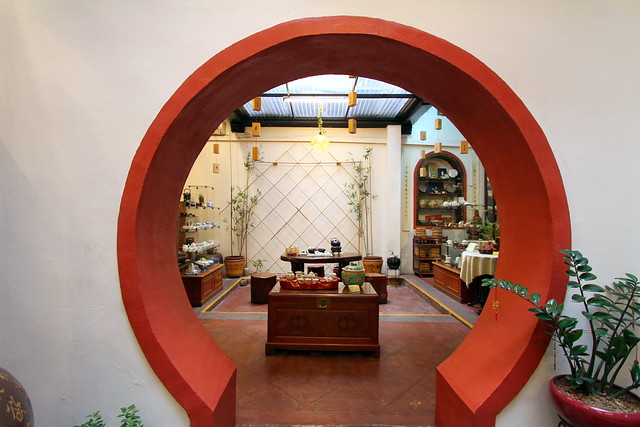
Wine appreciation class has been getting more popular over the years. Many of us are spending the time and money to learn to appreciate wine and I have seen more restaurants doing wine pairing with dishes. It kind of saddens me because nobody really bother to appreciate tea as much.
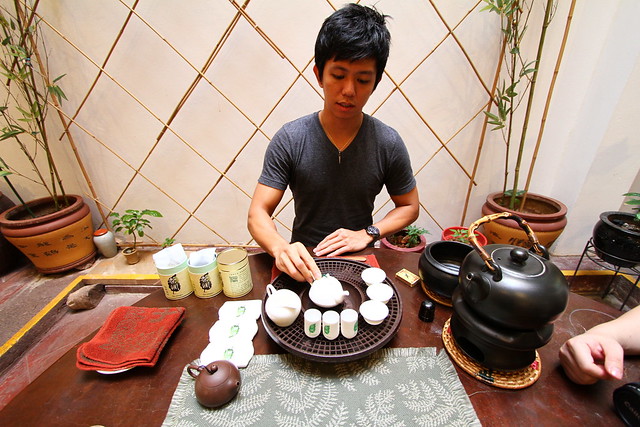
There are not many tea houses in Singapore. But those that exist, has been around for many years and the people running these tea houses have great passion in this long history of chinese tea tasting and appreciation. One of them is the young boss of Tea Chapter, Fund Lee.
If you have been a tea fan, you would have probably heard of Tea Chapter. It wasn’t technically opened by Fund. His father, together with 15 other shareholders, has been running this place for the last 23 years. After studying in a totally non related course in university, Fund decided to help his dad to run this tea house. By the way, he is only 26 years old!

A Chinese tea cup may look small, but it holds a great deal more than just tea and water. Every sip contains the distillation of thousands of years of Chinese culture. As we spend our afternoon with Fund, he walked through with us the basic tea appreciation and the intricate rituals of Chinese tea drinking such as varieties of tea, proper preparation, tea drinking etiquette etc.
Picture above are all the equipments needed to brew your tea, which includes tea pot, tea strainer, kettle, tea pitcher, brewing tray, water, tea leaves, tea pick, tongs, snifter cups, tea cups etc.
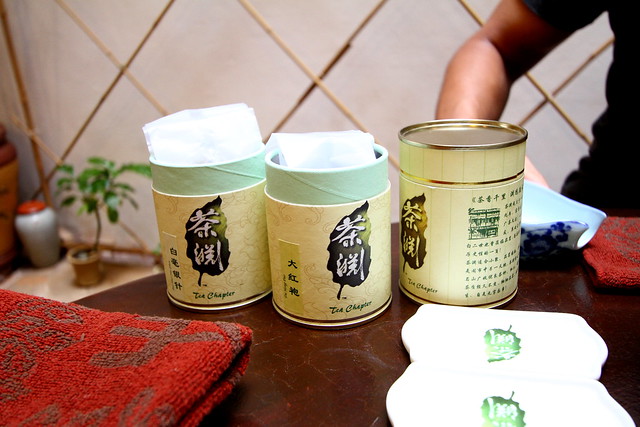
Chinese tea is generally classified as black tea (黑茶), oolong tea (乌龙茶), green tea(绿茶), yellow tea (黄茶),white tea (白茶)and floral tea(花茶). Within each category, differences in location, climate and soil conditions, oxidation and roasting process give rise to a wide spectrum of taste and fragrances.
Black tea is heavily roasted and fully oxidized while white tea has undergone very little fermentation and little or no roasting. In between are oolong, green tea and yellow tea. We tried 3 types of tea that day:
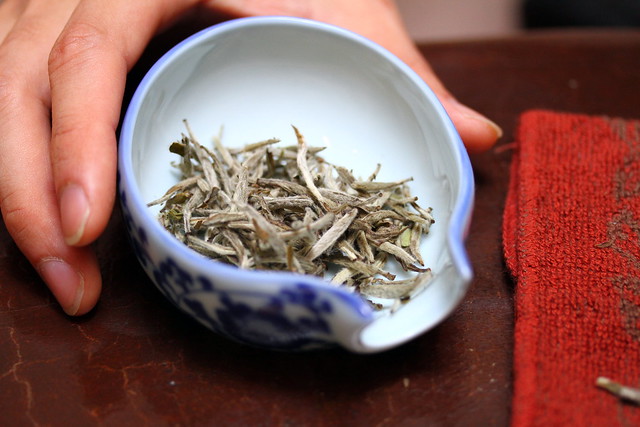
Silver Tea Leaf (百毫银针)
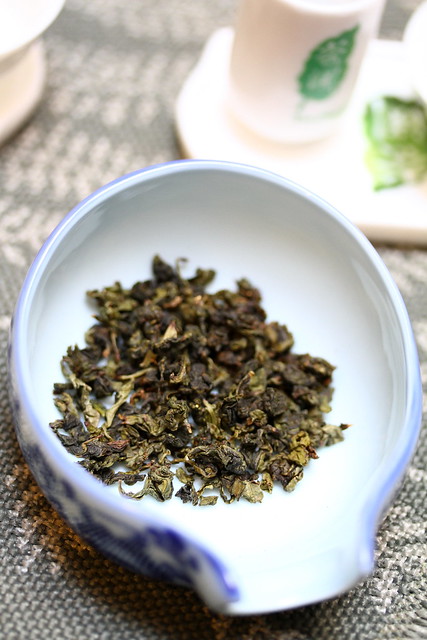
Imperial Huangjin Gui (御用黄金桂)
This is the tea Queen Elizabeth II drank when she visited the shop many years back.
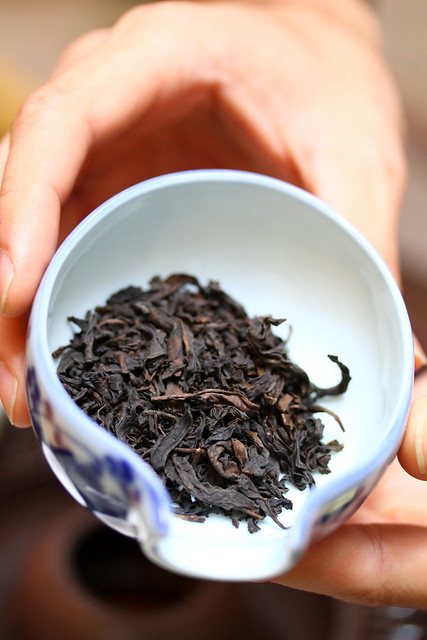
Da Hong Pao (大红袍)
There are many legends about its name “Da Hong Pao”. One of them is about a poor scholar who went to Beijing exam. One day, when he passed by WuYi mountain, he got very sick. The old abbot of a temple helped him, soaked a cup of tea for him to drink and he soon recovered.
Subsequently, this poor scholar passed the examination and was the top scholar. He went back to WuYi mountain to express his shane to the old abbot. It was a stormy night, he wanted to protect the tea tree hence, he used his red robe to cover it. Finally the tea trees were named “Da Hong Pao” and becoming the court’s tribute tea.
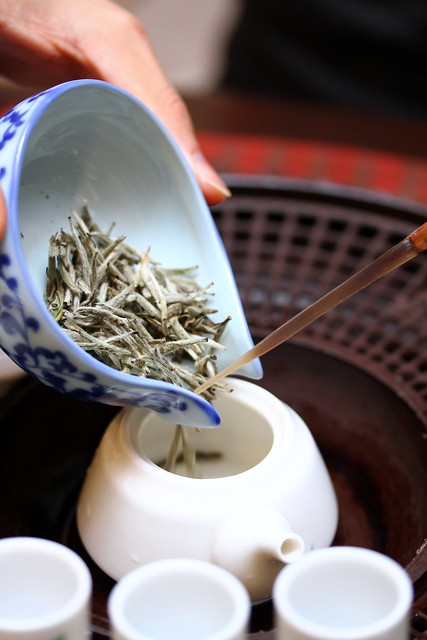
How to brew tea?
1. To prepare the Chinese tea, heat water in a kettle. Then, pour the heated water over teapot, snifter tea cups and regular tea cups to warm up the tea set.
2. Tongs are used to remove the water from the cup if they are too hot to handle with your hands.
3. To make Chinese tea, use the tea leaf holder to scoop the loose tea leaves and pour into the teapot. The amount of tea and water will vary on the type of tea, its quality, and the size of the teapot.
4. Pour water into the pot in circular motion, to make sure the tea leaves are brewed in a balanced manner. First brew is about 20 seconds. The purpose it to wash the tea leave, and not for drinking. Each subsequent brew is additional 5 seconds. The generic guideline is 5 brews.
5. When you pour the tea into the tea cups, only fill the cups to 70% because the chinese saying goes “茶倒7分满,人情留3分”.
Different teas should go with different types of tea wares. People generally tend to steep green, white and yellow tea in porcelain pots, while oolong, black, red tea in purple clay pots.
In a traditional Chinese tea ceremony, the tea is actually poured into the fragrance cup first for participants to examine and admire its appearance, aroma and quality before pouring into the tasting cups to drink.
Heating water to the proper temperature is important when making Chinese tea. Oolong (85C-100C) needs a higher temperature of water then white or green tea (78C-85C).

How should you drink the tea?
Good etiquette dictates that tea drinkers hold the cup with correct hand positions and enjoy the tea’s aroma before taking a sip. The cup should be drunk in three sips.
1. The first sip should be a small sip. Purpose: test the tea.
2. The second sip is a large sip. Purpose: taste the flavour of the tea.
3. The third sip is be drank faster and empty the cup. Purpose: to taste the texture of the tea.
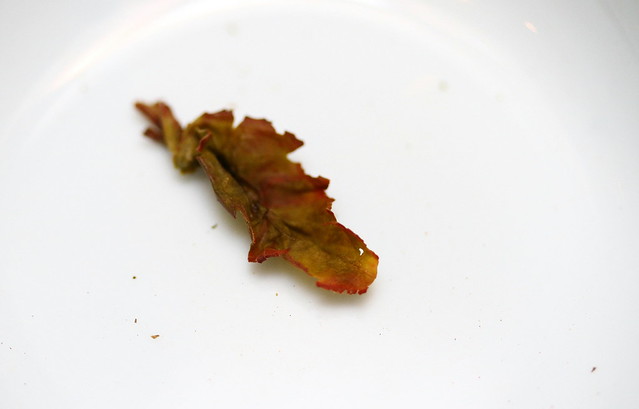
The is a brewed tea leaves from Da Hong Pao (大红袍). The red colour you see at the sides shows how fermented the tea leaves is. Generally, more fermented the tea leaves is, it is stronger in taste.
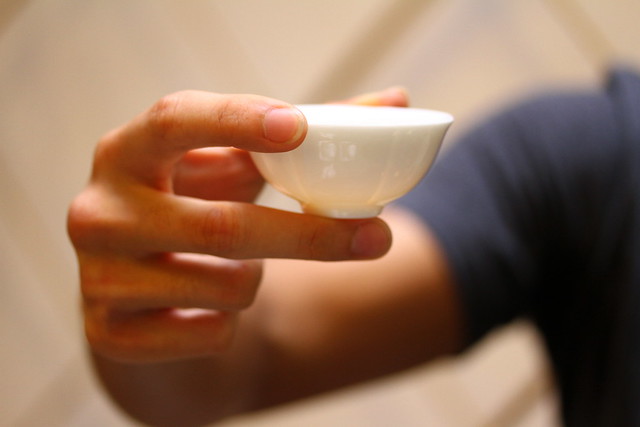
How men should hold the tea cup.
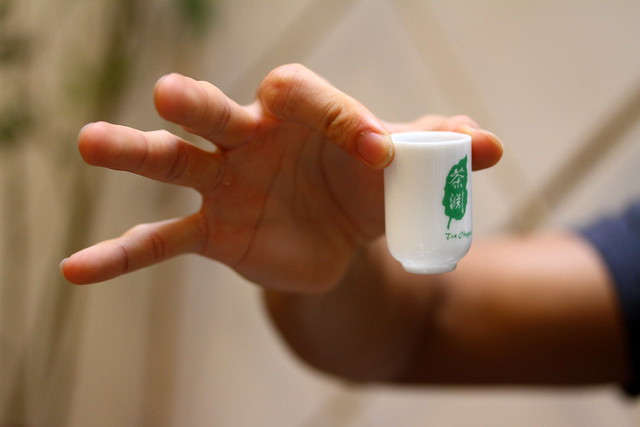
How women should hold the tea cup.
Do you know that brewing tea actually cultivates you? Everything you do have to be proper and zen, if you do it in a flustered manner, your tea won’t taste as good.

The names of Chinese teas are so descriptive, poetic or reflects its history or legends. Examples include The Red Robe, 大红袍, Dragon’s Well, 龙井, Beauty of the East, 东方美人, Silver Needles, 银针, and Phoenix Tea, 凤凰茶.
Tea appreciation is an acquired taste. Some of us will find black tea familiar to English breakfast tea. As you sample different types of tea, you will discover a range of taste, fragrance and aroma. Take your time to discover the specific type of tea that suits you.
Whatever I have written may not be the most detailed post, but just a few basic concepts will hopefully open the door to tea appreciation. And perhaps next time when you go to a restaurant for a meal, order different types of tea and do your own tea pairing with the dishes you ate!
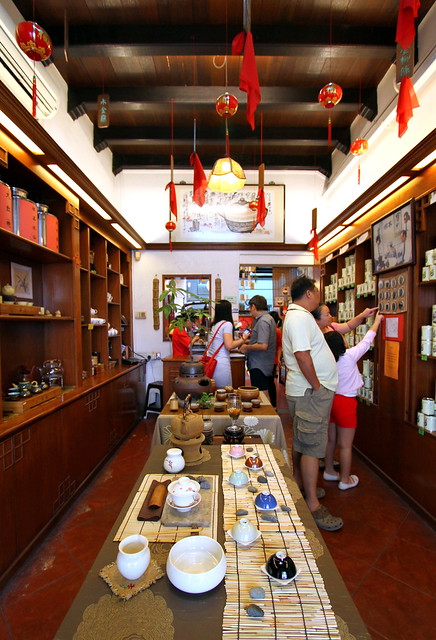
Tea Chapter is the haven for spiritual peace and your escape from the stress and noise in the city. It practices the traditional art of Chinese tea making and its appreciation. The place has tea house and retail shop where you can the tea leaves you like.
Drop by for a cup of tea. Find out for yourself why the ancient saying holds true: ‘Life is like tea. The longer it steeps, the richer it becomes.’
Tea Chapter
Address: 9-11 Neil Road (opposite Maxwell Food Centre)
Tel: 6226 1175, 6226 1917
Let’s build a food community that helps to update the food news in Singapore! Simply comment below if there’s any changes or additional info to Tea Chapter. We will verify and update from our side. Thanks in advance!
You may also like



